Laboratory glassware washers and ultrasonic glass cleaners are two of the most commonly used devices for cleaning glassware in laboratories. However, they differ in their principle of operation, accuracy, durability and range of use. Laboratory glassware washers use high-temperature and high-pressure water streams and detergents to clean glassware. In contrast, ultrasonic glasses cleaners use high-frequency ultrasonic vibrations to create tiny bubble bursts to clean glassware. Let’s take a closer look at the difference between the two.
How Laboratory glassware washers work
The main principle of a laboratory glassware washer is to place the glassware on the nozzle, spray it with high-pressure hot water and add a specialized detergent, then rinse and dry it. The entire process is often custom programmable, with cleaning parameters set according to the type of glassware or level of contamination, ensuring that the glassware is thoroughly cleaned.
- Place the glassware to be cleaned on a special stand or tray (when placing on the tray, make sure that the glassware is covered with water and detergent).
- Rinse or soak the glassware in water to remove loose or easily dislodged dirt or to soften/break down stubborn dirt.
- Glassware washer can add detergent to the cleaning system by itself. This step can thoroughly clean the surface dirt of glassware.
- 4. After the cycle, the washing system performs a final rinse and rinsing of the glassware surface with purified water to remove the detergent or residual particles. This ensures that there is no residue on the surface of the glassware.
- Use hot air to remove moisture from the surface of the glassware and allow it to dry.
Components and functions of Laboratory glassware washers
Laboratory glassware washers comprise roughly the same features, each with a specific function. With these parts working together to achieve an efficient and thorough washing process, here are my all-time top 4 laboratory glassware washer accessories:
Pin Insert: Used to hold and support the glassware to ensure it is securely placed in the washer’s wash tank. And it determines the maximum number of washes per wash. Each pin has a silicone tip to protect the glassware from scratches.
Pump: The pump in a bottle washer consists of an electric motor, pump body and pipework. Its main function is to draw water from a water source and transfer it through the pipework to the washing tank. You can adjust the pressure and flow rate of the pump to ensure a sufficient and powerful water supply. The pump fittings can be recirculated as many times as necessary to improve cleaning results and save on detergent and water usage.
Dispenser: The dispenser consists of several spray nozzles and hoses that evenly spray detergent and water onto the surface of the glassware, effectively removing dirt and residue from the glass surface. Depending on the number and position of the nozzles, it helps to improve the cleaning effect and save water.
Drying System: The drying system usually uses hot air or hot air to evaporate the water on the surface of the bottle, ensuring that the surface of the vessel is arid, which helps to reduce the possibility of bacterial growth.
Advantages of Laboratory Glassware Washers
-
Consistency: The utilization of washers ensures uniform cleaning for all glassware, reducing variability and standardizing results. Incorporating standard operating procedures, which can be programmed into specific units, is particularly advantageous for research labs seeking consistent outcomes.
-
Efficiency: The use of hot water and potent cleaning agents in washers reduces the cleaning duration. These machines effectively eliminate residues from glassware, even those that technicians might presume need handwashing. Certain models offer specialized alkaline and acid rinses, enhancing their effectiveness in removing tough contaminants.
-
Safety: By removing human involvement in the cleaning process, washers mitigate potential exposure to harmful substances. This significantly contributes to a safer working environment by minimizing direct contact with hazardous residues.
-
Automation: Washers streamline the cleaning process, saving time and effort. This automation frees up lab technicians to focus on other crucial tasks, thereby potentially increasing overall laboratory productivity.
-
Cost Reduction: Despite the substantial initial investment, the long-term benefits outweigh the upfront costs. Ignoring automation incurs hidden opportunity costs, making the investment in washers a cost-effective choice over time.
-
Dryable: Immediately after cleaning, you can dry it. High-efficiency HEPA filter and fan inject hot air into the inside of the glassware, and the slender pipette can also finish drying.
-
Traceability: Each cleaning record is full for easy traceability.
How Ultrasonic glasses cleaner works
The Ultrasonic glasses cleaner works by transmitting high-frequency sound waves through a liquid. Tiny bubbles are generated during the vibration process, and the shock waves and vortexes caused when the bubbles burst create a high-intensity cleaning effect on the surface of the labware. This effect effectively removes dirt, grease, and bacteria from the surface of the labware. At the same time, the solution can be recycled as many times as needed.
Ultrasonic glasses cleaner parts and their functions
Each part of the ultrasonic glasses cleaner has its specific function. The following is an introduction to some common features and their functions.
Piezoelectric crystal transducer: Its main function is to use the piezoelectric effect to convert electrical energy into mechanical vibration to achieve the cleaning effect. Usually, the piezoelectric crystal transducer has high power and is suitable for applications that require a strong cleaning effect.
The difference in its quality has a significant impact on the price of the machine and the quality of the cleaning. The crystals decay naturally with use, and a low-quality transducer will last much less than a transducer made with high-quality crystals. Cheap ultrasonic glasses cleaners will show good cleaning ability at the start of use but will usually offer a deterioration in cleaning quality within 3-6 months.
Low-power ultrasonic transducer: Compared to crystal transducers, it is characterized by its suitability for the cleaning of small items such as spectacles and jewelry. It is usually made of quartz material, which has a low price and can significantly reduce the manufacturing cost of ultrasonic cleaners. However, it is unsuitable for scientific research and the precision cleaning industry because of its general cleaning effect.
Ultrasonic Generator: This is the key component in ultrasonic glasses cleaner and is mainly used to generate high-frequency ultrasonic vibrations. It is used with the control panel to adjust the working time, frequency, and power of the ultrasonic waves. Many low-quality ultrasonic generators undergo significant quality changes over time. This is a major cost issue for businesses or laboratories. If you want to achieve efficient and thorough cleaning of surfaces, choose a high-quality generator to reduce maintenance costs.
Tank Thickness: Tanks can corrode and wear out with use, so it’s critical to check the thickness of the tank before purchasing.
Advantages of ultrasonic glass cleaner
- Versatility: it can clean chips, jewelry, glasses, etc.
- Efficient Cleaning: It is suitable for cleaning all kinds of tiny holes and crevices on the glass surface and areas that are difficult to clean
- Non-contact: glassware does not need to touch brushes or other cleaning tools during the cleaning process, reducing scratches or damage.
- Low Power Consumption: In contrast to other types of parts cleaning systems that use a variety of motors to pump, spray, circulate, agitate, and capture cleaning chemicals and their vapors, ultrasonic cleaners require only a small motor to filter the solution. The rest of the cleaning is done by highly efficient electrical energy and sensors that minimize power consumption.
Laboratory glassware washers vs ultrasonic glass cleaner
|
Laboratory glassware washers
|
Ultrasonic glasses cleaner
|
|
|
Principle of operation
|
Just use high pressure water and detergent to work with, then rinse and dry.
|
Utilising ultrasonic vibration, there is no rinsing or drying function.
|
|
Cleaning Process
|
Main washing-neutralising washing-rinsing-drying, fully automatic completion, glassware can be used directly after cleaning.
|
It is only washed and then requires manual rinsing and drying, with a low degree of automation.
|
|
Effect
|
Set the appropriate programme to complete the cleaning, to ensure the cleanliness, and can record the cleaning data.
|
No record of cleaning, which may result in cracks, bubbles, etc. on utensils
|
|
Cleaning depth
|
Efficient for bulk cleaning, might not reach intricate areas.
|
Reaches intricate areas for thorough cleaning. But limited capacity may struggle with stubborn stains.
|
|
Capacity
|
Large
|
Small
|
|
Price
|
High
|
Low
|
|
Industry
|
Suitable for high-capacity and standardized cleaning.
|
Ideal for detailed cleaning needs and smaller batches.
|
Types of laboratory glassware washers
A laboratory glassware washer is one of the indispensable laboratory equipment. It can efficiently clean beakers, flasks, test tubes, burettes and other glassware used in experiments.
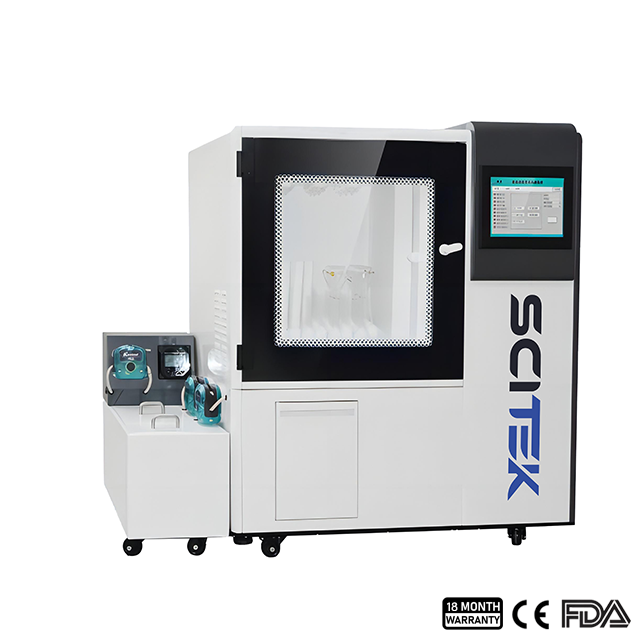 |
.png) |
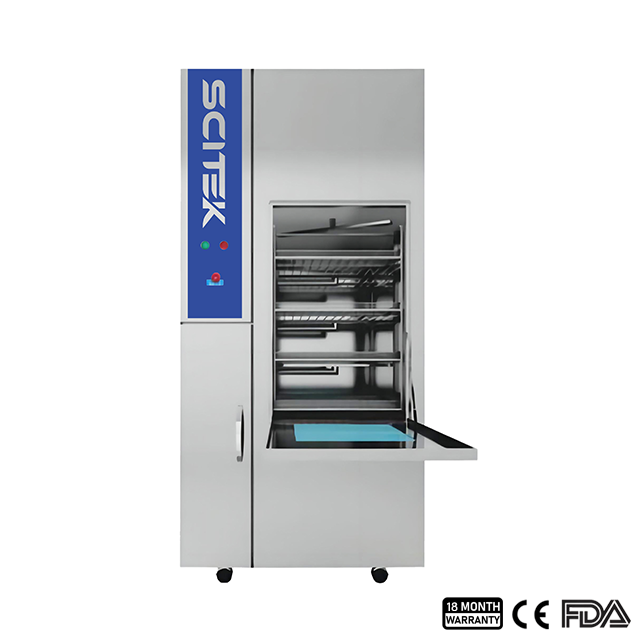 |
| Acid Steam Cleaning System | GMP Washer | Glassware Washer |
How do you choose a laboratory ultrasonic cleaner?
Ultrasonic cleaning machines are used in laboratories to clean glassware, beakers and test tubes. Compared with manual cleaning, ultrasonic cleaning machine has the unique advantage of batch cleaning, which can clean beaker test tube internal surface dirt. Ultrasonic cleaning machine industry development so far, the market has a wide variety of types, functions and features, so you feel dazzled. What are some good skills that allow you to choose the right one quickly? The next will give you 5 tips.
1. Tank size
The size of the tank directly affects the maximum number of beakers that can clean at one time. Therefore, you should check the size of the glassware to be washed daily before purchasing. Try to avoid causing insufficient capacity or too much space. After all, the advantage of laboratory ultrasonic cleaners is the efficiency of batch cleaning.
2. Ultrasonic frequency
Daily ordinary cleaning can choose to clean the frequency range of 28-40kHz or so; for cleaning deep holes, stubborn, slit more parts, the cleaning frequency range can choose more than 40kHz or even hundreds of kHz. If broadband frequency modulation is cleaned, the effect will be better.
3. Function
According to the function requirement of laboratory ultrasonic cleaning machines, there are CNC types, mechanical types, power-adjustable types, and so on. If you have requirements for the power of different cleaning workpieces, you can choose the power-adjustable.
4. Ultrasonic power
If more water or water cleaning agent is used in ultrasonic cleaning, the physical cleaning power is generated by the cavitation effect in a low-frequency cleaning machine. Ultrasonic cleaning machine can achieve better results, and high-frequency ultrasonic cleaning machine is commonly used to clean parts with narrower gaps or deeper holes.
5. brands of laboratory glassware washers
A high-quality washing machine is expensive. To ensure less maintenance and get long-term technical support and good after-sales service, choose a well-known brand when buying a washing machine. This will ensure that you can still find the manufacturer to carry out repairs after a few years of use so that you can use the machine without worries. Here we recommend Scitekglobal’s lab glassware washer.
Final Thoughts.
Laboratory glassware washers offer tangible benefits. Not only do they standardize and automate processes, but in many cases, they also help to reduce the costs associated with laboratory ware.
When choosing laboratory glassware washers, it is important to consider specific needs and requirements.


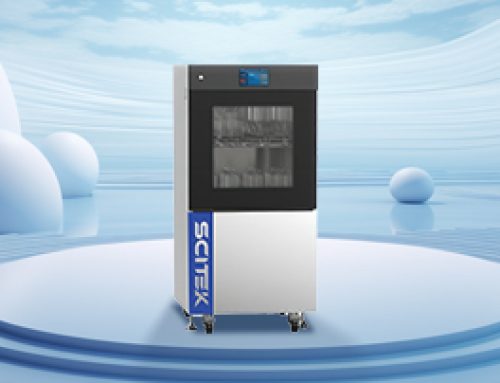
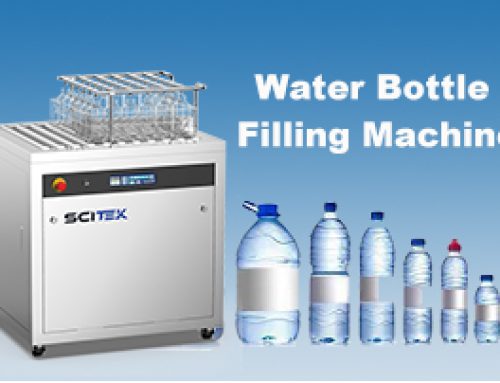
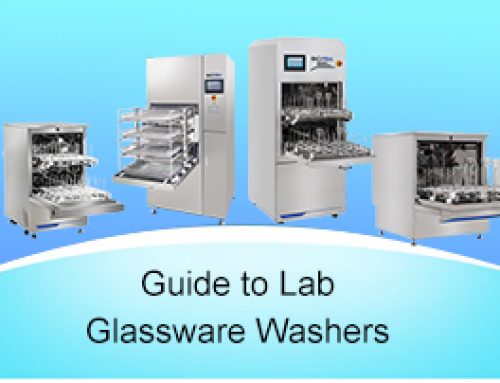
Get Social